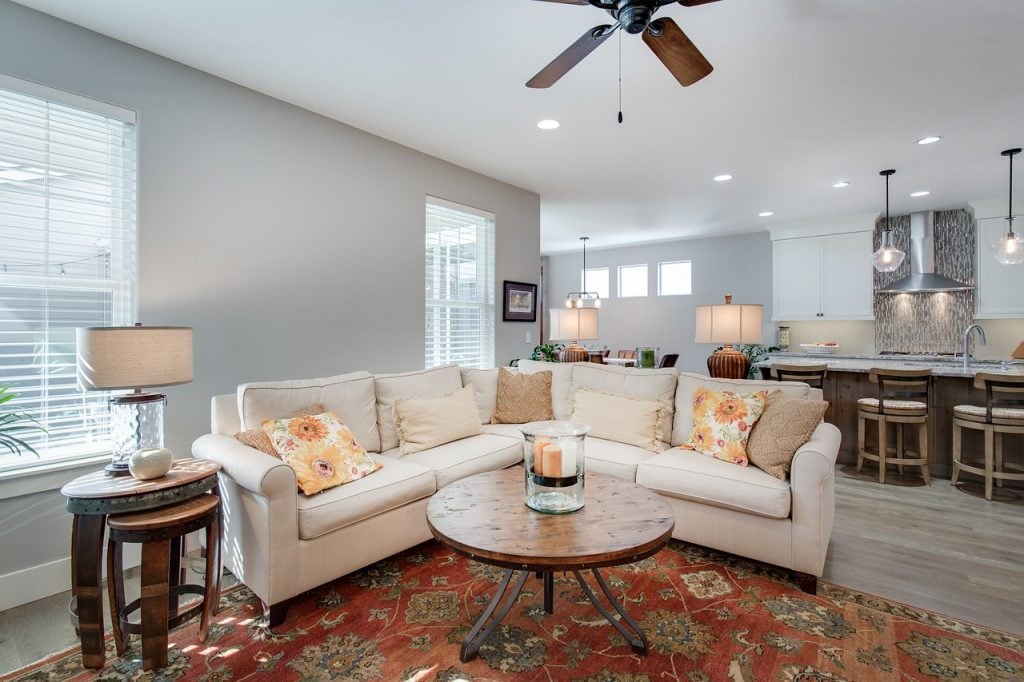Small spaces have a certain appeal and charm due to the fact that they hold your most favourite possessions so close to you and if everything’s arranged carefully, they become cosy, zen-like retreats.
However, if you don’t use clever design tricks to place and store all your possessions, you might end up in a cluttered, claustrophobic and anxiety-inducing space that all you’ll ever want to do is get out.

It takes some effort to organise a small space and make it seem larger than it is but all it takes are a few nifty tips to fool the eye.
The aim of home staging is to make the potential buyers feel at home in a space that isn’t theirs yet. You need to take a look around your home and see if it feels cluttered and small with furniture that is over-sized and unfitting. If that's the case, you need to scale down the furniture, rearrange it and reposition certain pieces and visually add more square footage.
Just because your home is on the smaller side, it doesn’t mean it can’t look spacious, airy and welcoming. As current furniture collections by King Living demonstrate, opting for smaller-scale furniture pieces, armless chairs, smaller tables with round tops and bright-coloured furniture upholstery, you can maximize your existing space and create an illusion of a bigger room.
If there are unused and worn-out pieces of furniture in your living room, consider getting rid of them and replacing them with lighter weight and lighter coloured pieces. If you let buyers see the old, unattractive furniture, they will think your home is neglected in all areas and it will put them off from purchase.
If you’re dealing with a limited budget, consider removing the chunky pieces and using a few tricks on the ones you decide to keep and repurpose – get covers for some, upholster the others and re-stain the wooden elements. It’ll change the look of the entire space and give it a fresh vibe.
Also, if you try pushing furniture closer to walls to free up some space in the central parts of the room, you risk making the space seem bare. You should rather bring them closer together to create an intimate and cosy conversation area and the traffic can flow freely around it.
While you’re figuring out the best furniture arrangement for your small space, choose a focal point in the room – one feature you can highlight, such as a gorgeous view or a fireplace. Arrange all pieces around that focal point and it’ll seem very ordered and intentional. It will also draw the eyes of visitors and give an impression of an organised space.
If you have an extra room that has no particular purpose, repurpose it with furniture. Such rooms add value to your home and when they’re furnished, buyers can imagine themselves in it. For instance, your basement can become a yoga studio, kids’ playroom or a home cinema. It just takes some soft floor covering, a few comfy pillows and lazy bags, shelves for toys, some dimmable lights and a pull-down TV screen.
Symmetrical furniture arrangements work really well in more formal areas of your home such as the seating in the family room or the table and chairs in the dining room. For a warm and cosy feel, place two armchairs with your sectional sofa or in a more rectangular room, arrange two identical sofas opposite each other with a coffee table in between to create a cosy nook for reading and chatting over a warm cup of tea.
However, if you need to add more visual interest and a more casual vibe to your room, asymmetry can also work well. It’s better suited for more informal high-traffic areas such as family rooms and eat-in kitchens.
Natural light has the power to make any space more beautiful and appear larger than it is. However, it needs to flow unobstructed throughout the room so don’t let the furniture block it. Place your sofas and chairs along the walls with no windows and leave the space in front of windows bare, especially if you have lower windows.
If you have stylish furniture, arrange it tastefully in a conversation area across the windows so the light can fall directly on it and enhance its beauty.
Staging a home for sale, in general, is no easy task but when you're dealing with a smaller house, challenges are bigger. A lot of people resort to hiring professionals for the staging job, but if you're limited with cash, these tips can be very helpful. It’s important you stay consistent in your intention as well as strict with yourself. Remove the excess stuff, pick details carefully and keep it simple. There’s no doubt you’ll increase the chances of getting the best buyers for your home while improving the looks and comfort of your living space at the same time.
About Lillian Connors
Lillian Connors can’t resist the urge to embark on a myriad of home improvement/DIY projects and spread the word about them. She’s also deeply into green practices, cherishing the notion that sustainable housing and gardening will not only make us far less dependent on others regarding the dwellings we inhabit and what we eat, but also contribute to our planet being a better place to live on. Check her out on Twitter.